Overview
PhotoHA® is 100 mg of lyophilized methacrylated hyaluronic acid (HAMA).
PhotoHA® provides 3D hyaluronic acid hydrogels with the unique attributes to be made at various concentrations and photocrosslinked (requires a photoinitiator) to provide different gel stiffness.
Advanced BioMatrix provides PhotoHA®, a methacrylated hyaluronic acid (HAMA) for photocrosslinkable hydrogels. Such hydrogels offer native-like 3D HA gels with the special attributes to be made at several concentrations and photocrosslinked to offer diverse gel stiffness.
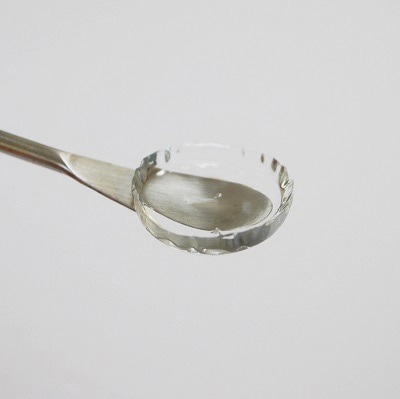
Image Credit: Advanced BioMatrix
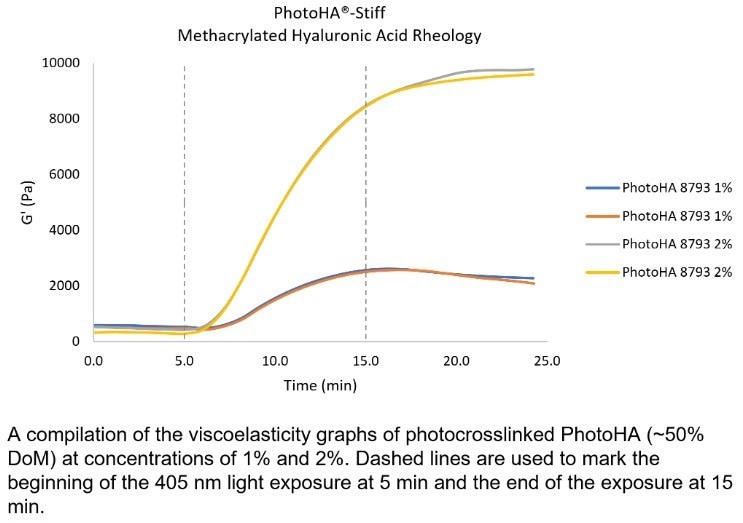
Image Credit: Advanced BioMatrix
Table 1. Source: Advanced BioMatrix
| Item |
Catalog Number |
Photoinitiator Included |
| PhotoHA |
#5212 |
N/A |
| PhotoHA + Irgacure |
#5220 |
Irgacure (365 nm) |
| PhotoHA + LAP |
#5274 |
LAP (405 nm) |
| PhotoHA + Ruthenium |
#5275 |
Ruthenium (400-450) |
Hyaluronic acid is known to be the amplest glycosaminoglycan present in the body, being an essential component of various tissues across the body. While it is plentiful in extracellular matrices, hyaluronic acid also adds up to tissue hydrodynamics, movement, and proliferation of cells, and participates in several cell surface receptor interactions.
For most of the cell types, it is suggested to add extra ECM proteins to the hyaluronic acid hydrogels. The proteins offer significant cell binding sites.
As soon as solubilized, the PhotoHA® could be stored at 2 to 10 °C for almost one month.
Table 2. Source: Advanced BioMatrix
| Parameter, Testing, and Method |
Methacrylated Hyaluronic Acid #5212 |
| Sterilization Method |
Filtration |
| Sterility - USP modified |
No growth |
| Form |
Lyophilized Powder |
| Package Size |
100 mg |
| Storage Temperature |
-20 °C |
| Shelf Life |
Minimum of 6 months from date of receipt |
| Shelf Life After Reconstitution |
1 Month |
| Degree of Methacrylation |
45-65% |
| Molecular Weight |
100-150 kDa |
| NMR Analysis |
Characteristic |
| Hydrogel Young's Modulus E (Pa) |
Characteristic |
Swelling characteristics of PhotoHA®
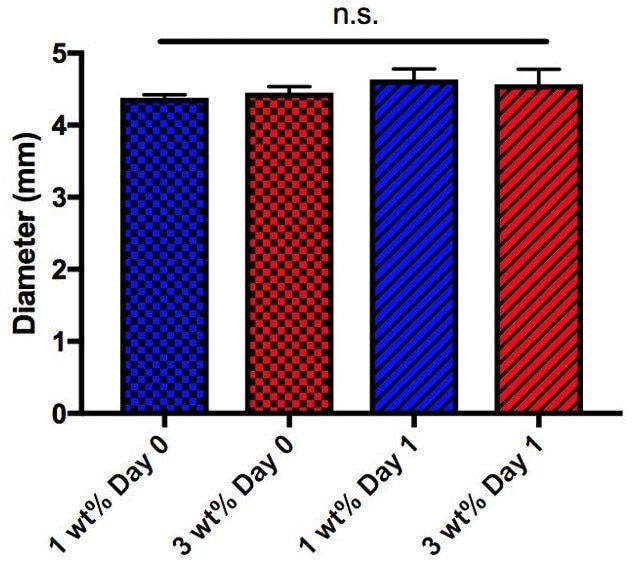
Image Credit: Advanced BioMatrix
Nearly, 50 μL hydrogels produced in 4.7 mm diameter molds were imaged before and after incubation in phosphate buffered saline at 25 °C for 24 hours. The diameter of hydrogels was measured with the help of ImageJ software. Statistical comparisons that happened between groups (n = 3) were executed through one-way ANOVA with post hoc testing and importance determined at p < 0.05.
Compressive modulus of PhotoHA®:
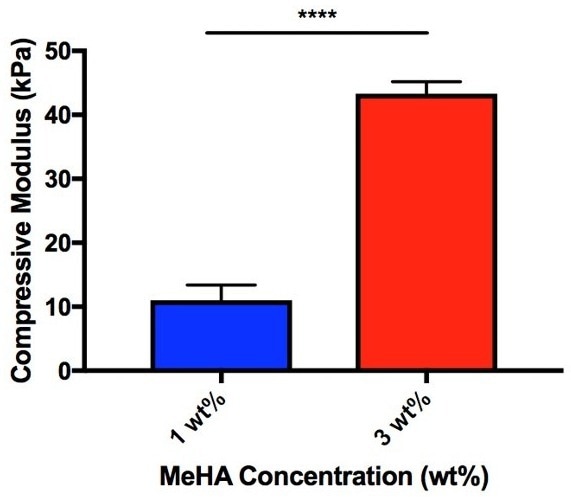
Image Credit: Advanced BioMatrix
Dynamic mechanical analysis (Q800, TA Instruments) was executed on 50 μL hydrogels engineered in 4.7 mm diameter molds. Hydrogels were safeguarded inside a fluid cup through a 0.01 N pre-load and condensed to 30% strain at a rate of 0.5 N min-1.
The Young’s modulus of every hydrogel was assessed as the slope of produced stress–strain curves happening between 10% and 20% strain. Statistical comparison taking place between MeHA concentrations (n = 3) was executed through a Students t-test with two-tailed criteria and significance determined at p < 0.05.
Reaction behavior of PhotoHA®:
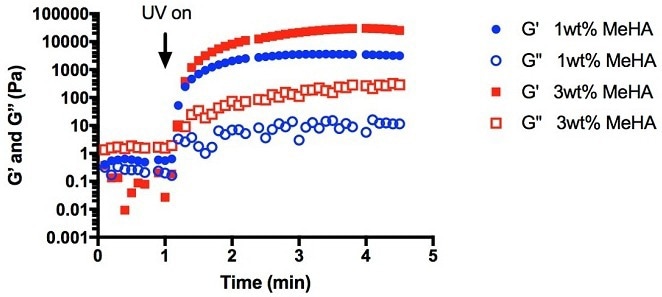
Image Credit: Advanced BioMatrix
Rheological time sweeps (AR2000 stress-controlled rheometer, TA Instruments; 0.5% strain, 1 Hz, 25 °C) of MeHA crosslinking along with exposure to UV light (= 320–390 nm) and in the existence of 0.05 wt% Irgacure 2959 (I2959). After 1 minute, the macromer solution (that is, MeHA and I2959) was vulnerable to UV light, thereby leading to a plateau of moduli before 5 minutes.